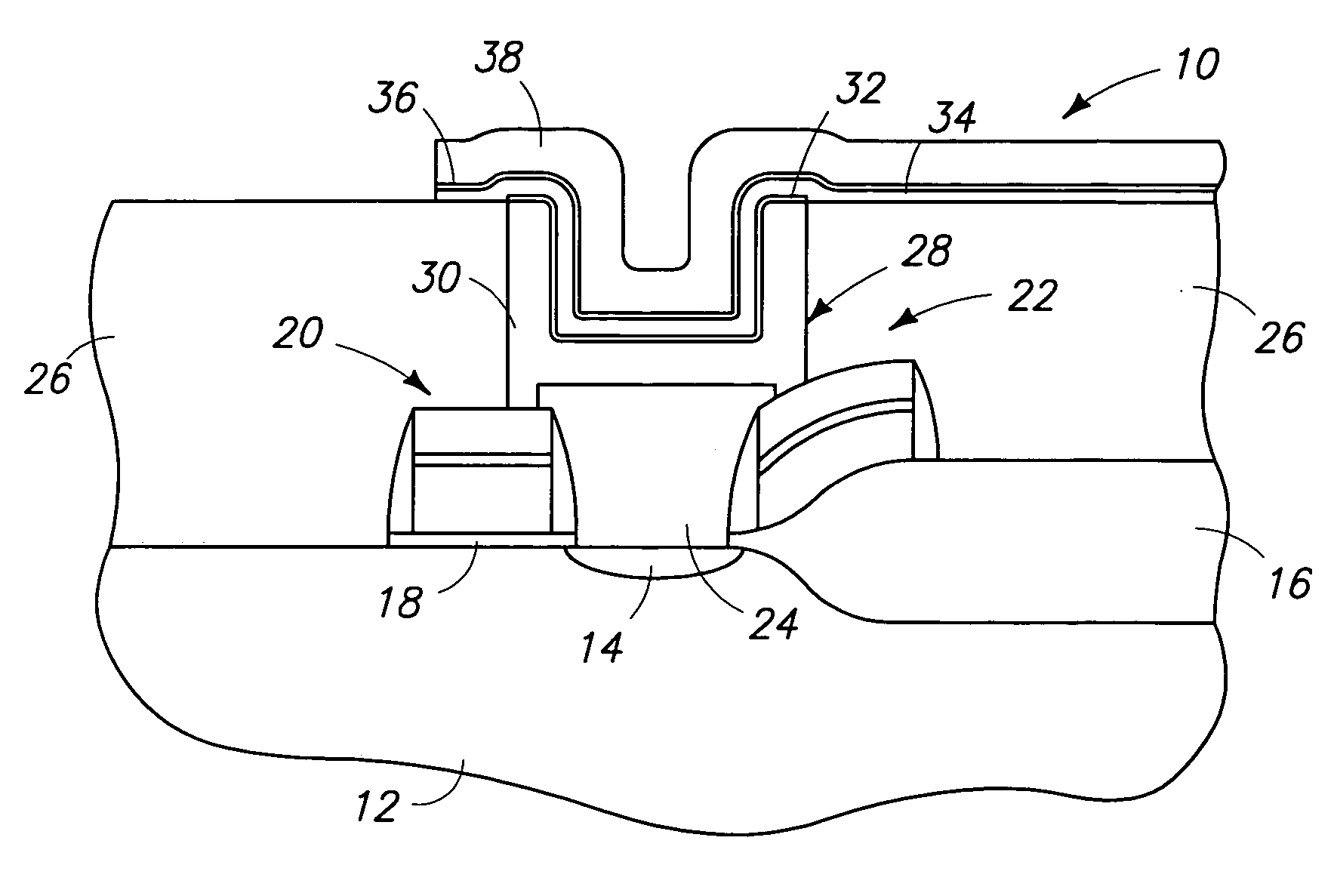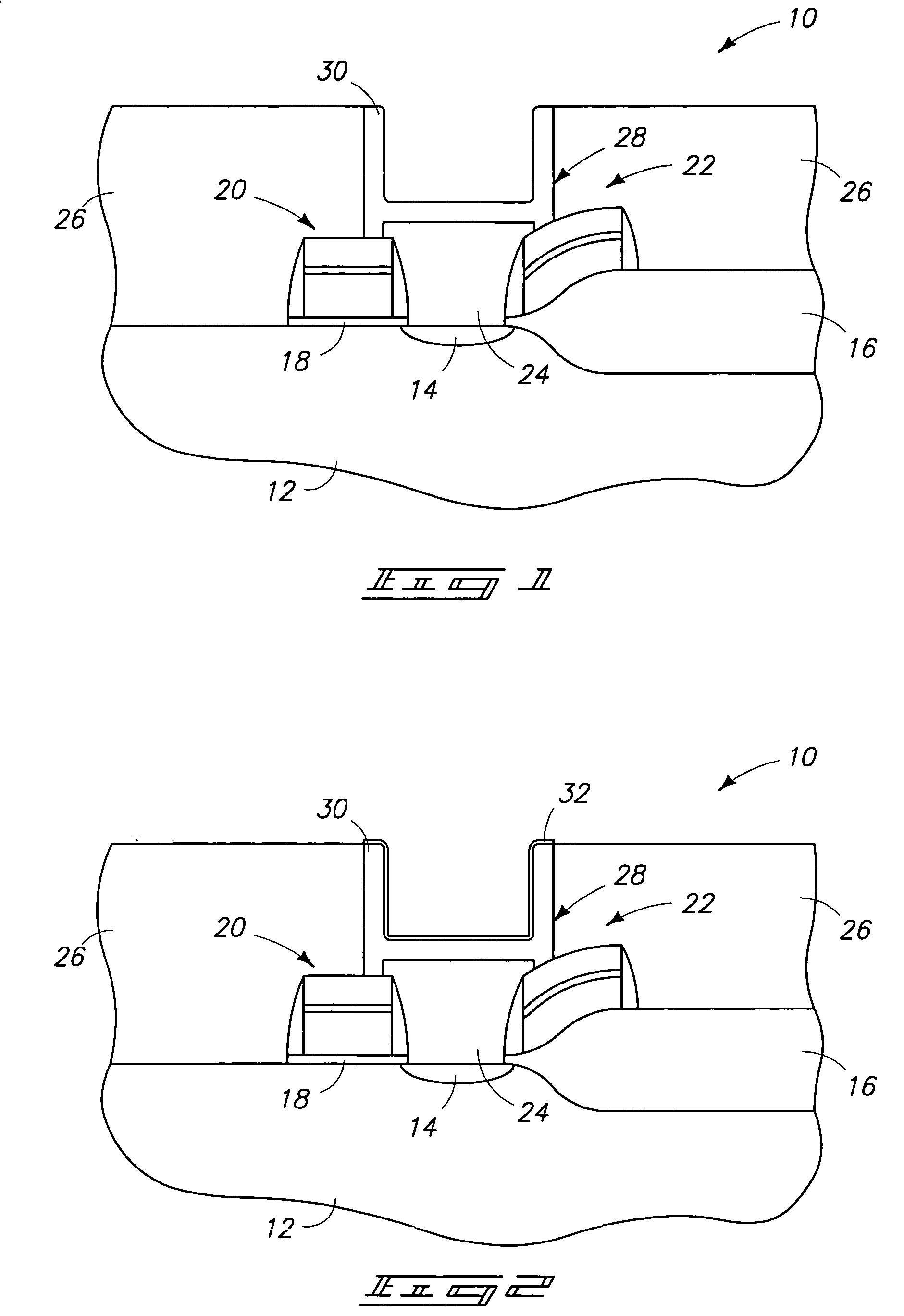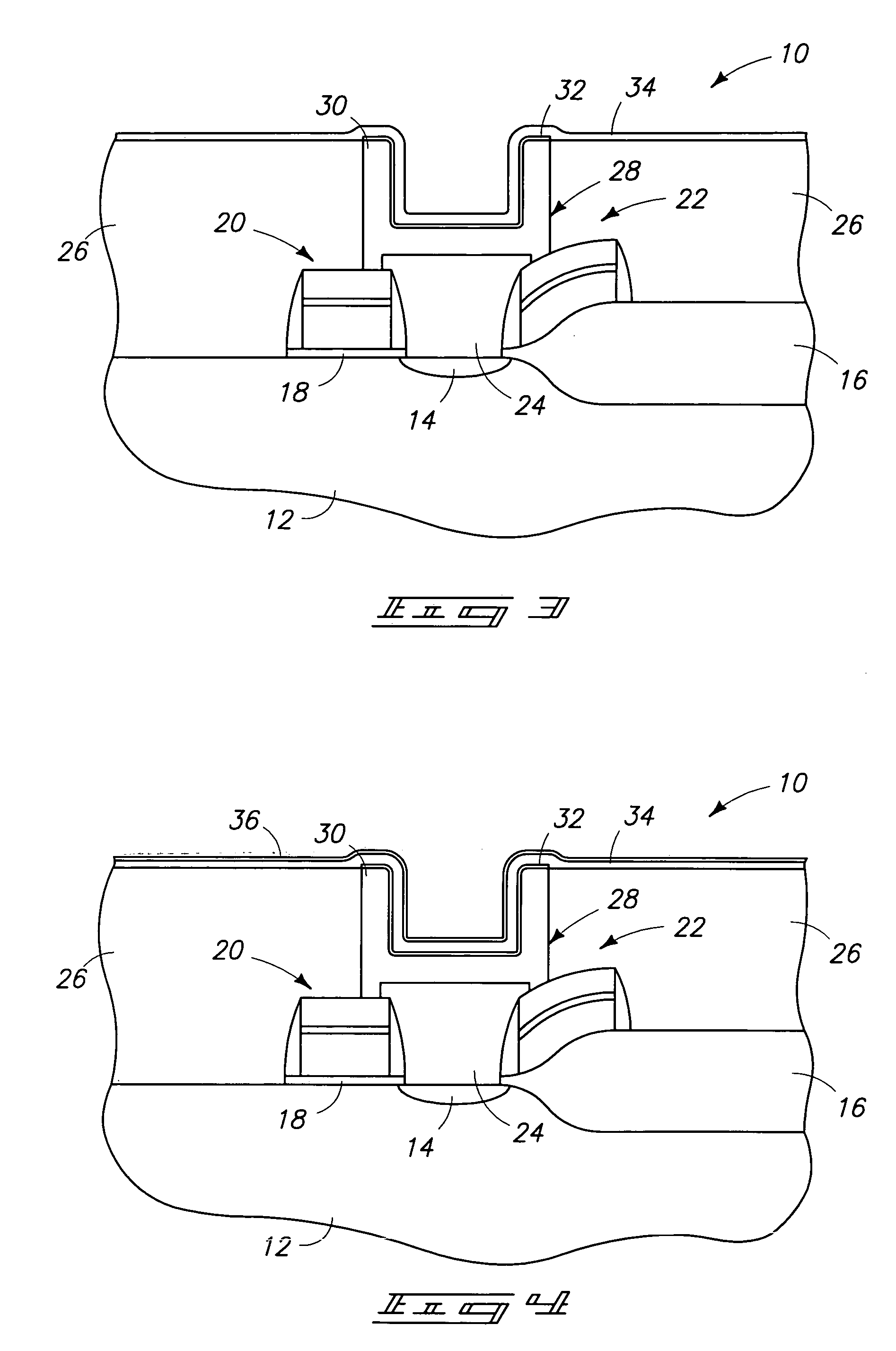Methods to form electronic devices and methods to form a material over a semiconductive substrate
a technology of semi-conductive substrates and electronic devices, which is applied in the direction of coatings, chemical vapor deposition coatings, capacitors, etc., can solve the problems of pin holes or other defects in the deposited layer, the thickness of the capacitor dielectric layer is smaller, and the conventional capacitor dielectric materials such as siosub>2/sub>nsub>4/sub>may become unsuitable,
- Summary
- Abstract
- Description
- Claims
- Application Information
AI Technical Summary
Problems solved by technology
Method used
Image
Examples
Embodiment Construction
[0019] This disclosure of the invention is submitted in furtherance of the constitutional purposes of the U.S. Patent Laws “to promote the progress of science and useful arts” (Article 1, Section 8).
[0020] It has been recognized that the chemical vapor deposition of silicon nitride utilizing silicon hydride gases and ammonia occurs at different rates over the storage node electrode of a DRAM capacitor (including any thin oxide formed thereover) and doped oxides. Specifically, such deposition of silicon nitride is largely selective to the storage node (typically polysilicon), and regardless is at a considerably greater growth rate than what occurs over the BPSG or other doped oxide layers. Accordingly, as the silicon nitride layer thickness over the storage node fell to below 80 Angstroms, an apparent lesser quantity growing over the doped oxide layer resulted in a layer too thin to achieve the barrier layer effect during the subsequent re-oxidation to form the outer oxide layer of ...
PUM
| Property | Measurement | Unit |
|---|---|---|
| thickness | aaaaa | aaaaa |
| pressure | aaaaa | aaaaa |
| temperature | aaaaa | aaaaa |
Abstract
Description
Claims
Application Information
 Login to View More
Login to View More - R&D
- Intellectual Property
- Life Sciences
- Materials
- Tech Scout
- Unparalleled Data Quality
- Higher Quality Content
- 60% Fewer Hallucinations
Browse by: Latest US Patents, China's latest patents, Technical Efficacy Thesaurus, Application Domain, Technology Topic, Popular Technical Reports.
© 2025 PatSnap. All rights reserved.Legal|Privacy policy|Modern Slavery Act Transparency Statement|Sitemap|About US| Contact US: help@patsnap.com



